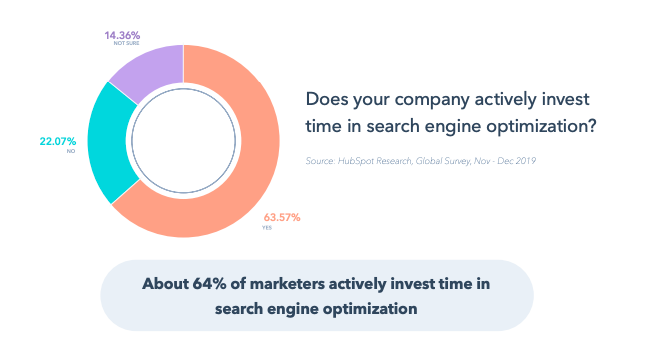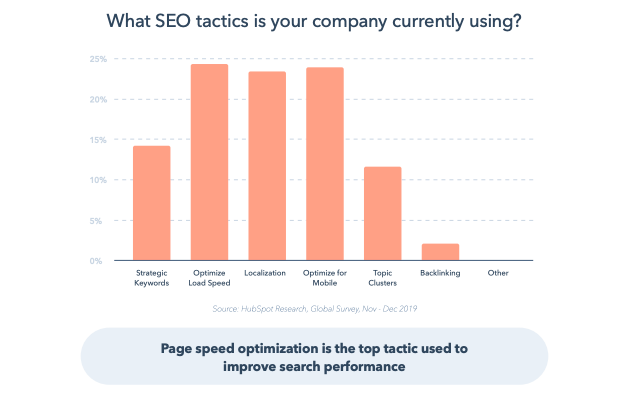In SEO, everything is anchored in user experience. And that experience hinges on providing the information that a person searches for, in a way that search engines can identify. That’s how search engines provide relevant information to users.
Search engines are getting better and better at understanding search intent, which means they are providing more unique and granular search results that better address the user’s specific ask. The content on your website needs to provide a solution to a user’s problem, whether it’s a long-form article or a one-word answer.
In the most recent HubSpot Research survey, 64% of marketers actively invest in SEO. While I’d like to see that number increase significantly, I like that SEO is becoming more of a priority across all industries.

The fundamentals of SEO haven’t changed much over the years, but the problems to solve are constantly changing. Historically, we’ve had to create content that meets the needs of both our audience and search algorithms, and the two didn’t always align.
Now, with major advancements in Google’s ability to process natural language, most recently through the BERT update, you can focus more on what the user wants — there is less of a tradeoff between pleasing the algorithm and the user. They generally want the same thing.
Below are a few areas we are focusing on to improve our organic search visibility this year. I strongly suggest that you and your business consider tweaking your SEO strategy for 2020 to outrank your competition.
Keep Building a Technical SEO Foundation
Keep focusing on your website’s technical infrastructure. This is essential to delivering a great user experience and lays the groundwork for your SEO efforts.
This means things like site accessibility, speed, information architecture, and overall site functionality, and also content that includes proper structured data, internal linking, and other markup to ensure that Google yields richer search results on your behalf. According to HubSpot Research, page speed and mobile optimization are the most utilized tactics for SEO.

Search algorithms change constantly — sometimes several times a day. However, the thing that has changed the most over time is the way people search. We just try to keep up. If you continue to provide a solid user experience, strategic content structure, and make sure your site is technically sound, search engines should help people find you.
For example, in 2019, HubSpot removed unused 3rd party scripts across HubSpot domains and centralized a list of stakeholders who could add and remove them, significantly reducing the amount of unused javascript that was slowing down the loading time of our webpages, negatively impacting user experience.
Jackie Chu of Dropbox says, "SEOs should really be thinking of how to create the most structure on their site - from having consistent navs to employing ordered/unordered lists, using headers and breaks sensibly, schema etc. Having a crisp HTML footprint is the easiest way to qualify for rich features in SERPs."
Start Focusing on Intent: Give Your Users What They Really Want
Start obsessing over search from your users’ point of view. Drill into their intent. Historically, the name of the SEO game was finding the intersection where high volume and low competition keywords meet. That is still true, but the beauty of the improvements in natural language processing (NLP) is our ability to find pockets of intent around those keywords.
The level of granularity in a Google search result, for example, is more acute than ever; use this to your advantage as you plan your content.
Here’s a great example: When you search “London weather,” Google surmises you are in the London area, literally deciding whether to grab a jacket before stepping outside (which is often the case!). So Google serves up the current temperature and maybe the weekly outlook.

from Marketing https://ift.tt/2JQo8Th


No comments:
Post a Comment